April’s Recipe: Fun With The Kiyomi Tangor (Tangerine)
An Easy Touch – Fruit Recipe 1
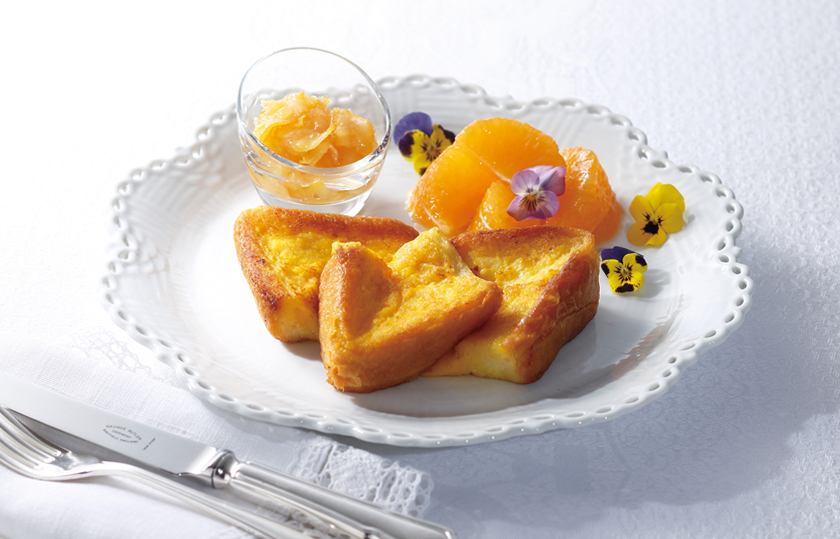
French Toast Using Kiyomi Tangors
Refreshing French Toast with the Sourness of Citrus Fruit
Ingredients (One portion)
A Small Touch Fruit Recipe 2
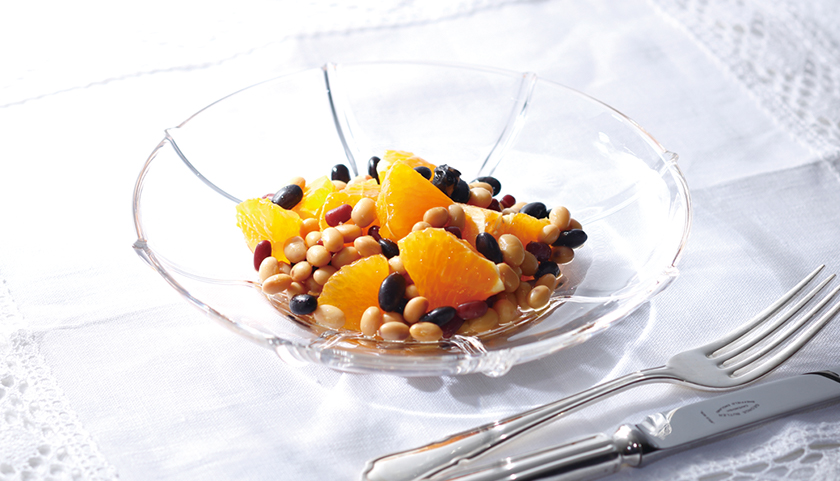
Steamed Bean and Kiyomi Tangor Marinade
Easy to make with a wonderful nutritional balance.
Ingredients (2-3 portions)
A Small Touch – Fruit Recipe 3
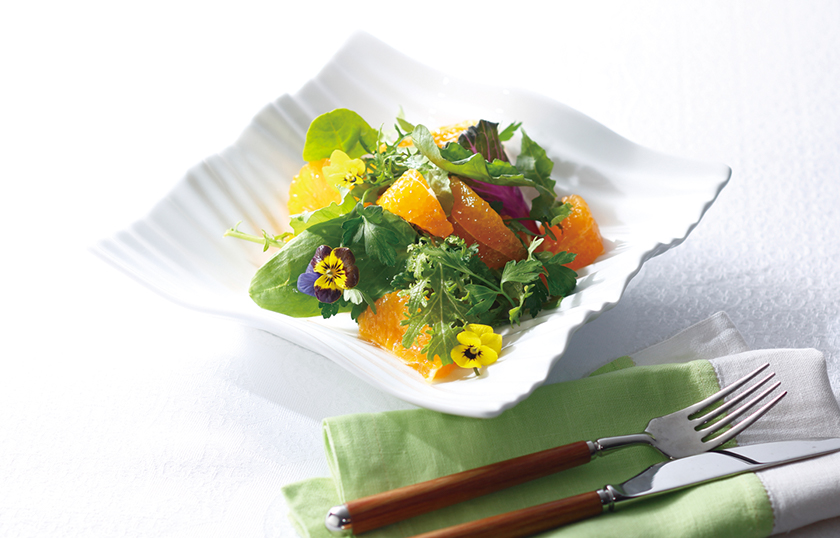
Herb Vegetable and Kiyomi Tangor Salad
A simple mixture of citrus fruits and vegetables to jet-start your day!
Ingredients (2 portions)
(A variety of herb vegetables and edible flowers. If you don’t have that, baby leaf lettuce will do.)
Creator: Shinjuku Takano Fruit Coordinator
April Special: Citrus Fruits, Ehime Prefecture, Kiyomi Tangor
A new hybrid has been born from the Satsuma Mandarin Oranges Japanese people have come to love and California Oranges.
Japan’s first domestic citrus fruit of its kind; the Tangor.
The Tangor, a fruit made from the sweetest and juiciest parts of both species of oranges, is a proud product of Ehime Prefecture.
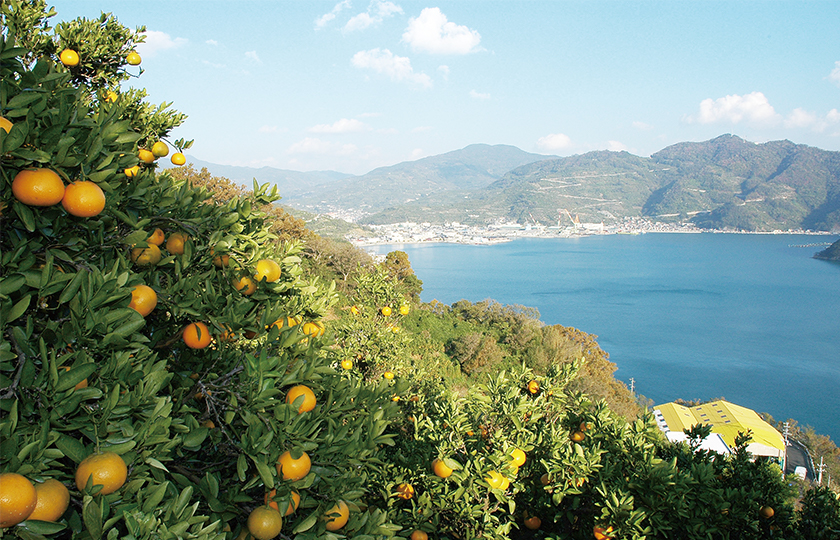
Sun / The Sun Reflecting off the Sea / The Sun Reflecting off the Stone Wall of the Field: The Three Deciding Factors of the Deliciousness of the Sun
In the heart of Ehime Prefecture, said to be the kingdom of citrus fruits, lies the biggest producer of high quality Kiyomi Tangors, Nishiuwa. Along the coast is a complex combination of capes and canals and the inland is made up of mostly rolling hills. In past generations, before the land was used for growing citrus fruits, the farmers tilled the land in the mountains. They used the rocks they dug out to construct stone walls, which led to the creation of plantations. Through hard work, they were able to turn the steep slopes of the land into areas suitable for farming. Making the best of the slope of the land, they were able to increase the hours of usable sunshine, and that, paired with a good method of drainage, made the area the optimum place for growing citrus fruits.
Kiyomi Tangors started being grown in Nishiuwa’s old town of Misakicho in the 50th year of the Showa Era. By breeding the Miyagawawase mandarin orange with the Toro Vita orange of California, the country’s first Tangor was born. The high quality Kiyomi Tangors are grown by combining the power of the plentiful sunlight that pours over the sloped hillside with the sunlight that reflects off the sea and off the trudgingly built stone walls.
The amazing flavor of the Kiyomi Tangors lasts from September until the end of November. To keep the tangors safe from the cold and the northern winds, as well as from birds, they are placed in bags. Because the harvest of the tangors coincides with the harvest of the other Satsuma mandarin oranges, it would appear that the workers have their hands full. Also, because the fruits have to survive the winter, they also need to be protected from the snow. The cold may cause the fruit to get a sand-like xerosis and become bitter. Because of these conditions, it is very important that the fruit be kept in a bag over the winter. With the coming of spring and the harvest season, the workers can truly say that the Kiyomi Tangors are the fruits of their labor. The Kiyomi Tangor, whose juicy insides are soft enough to just melt in your mouth, is a new, superior type of hybrid fruit. And just like the Dekopon and the Shiranuhi introduced in February’s edition, without them you’d never be able to experience such a flavor. So please, enjoy the invigorating scent and the mild sweetness of a Kiyomi Tangor.
-
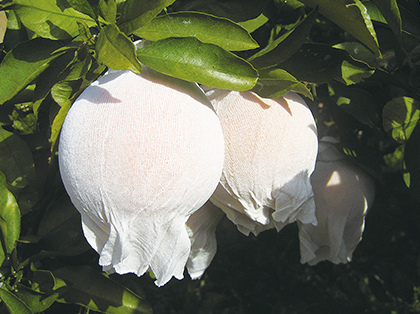
The indispensible Sante, the bag used to help the Kiyomi Tangors survive the winter, is made from an elastic that fits perfectly around the fruit.These differ greatly from the paper bags used in the past and with this new material and method of cultivation, farming efficiency seems to be higher than ever. Increased measures are being taken to protect each fruit from the harsh winter cold, including damage caused by wind and snow. -

In order to grow the delicious Kiyomi Tangors, cultivation techniques different from that used to grow mandarin oranges have been established, producing the high quality fruit in a superior producing area.
Article provided by Shinjuku Takano

